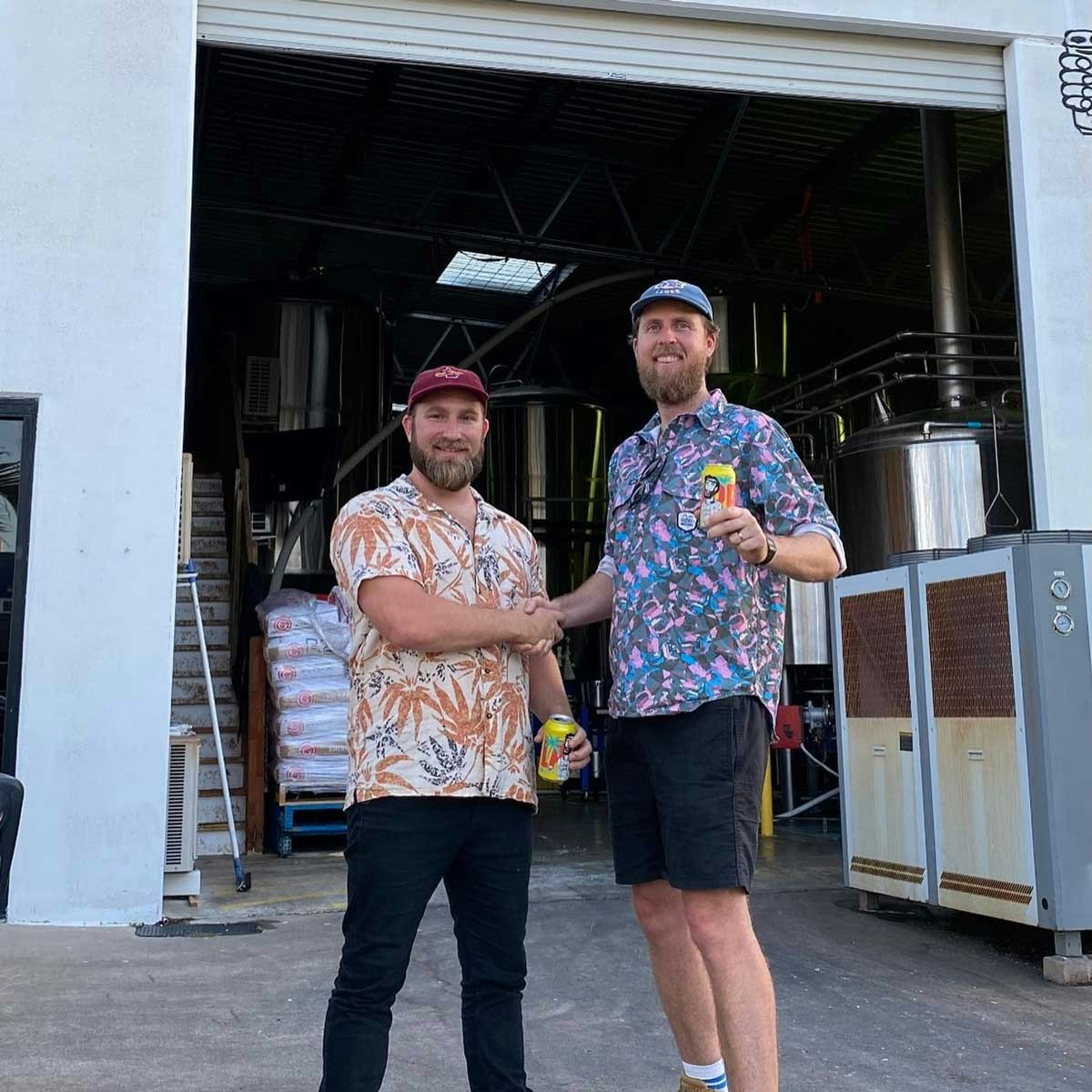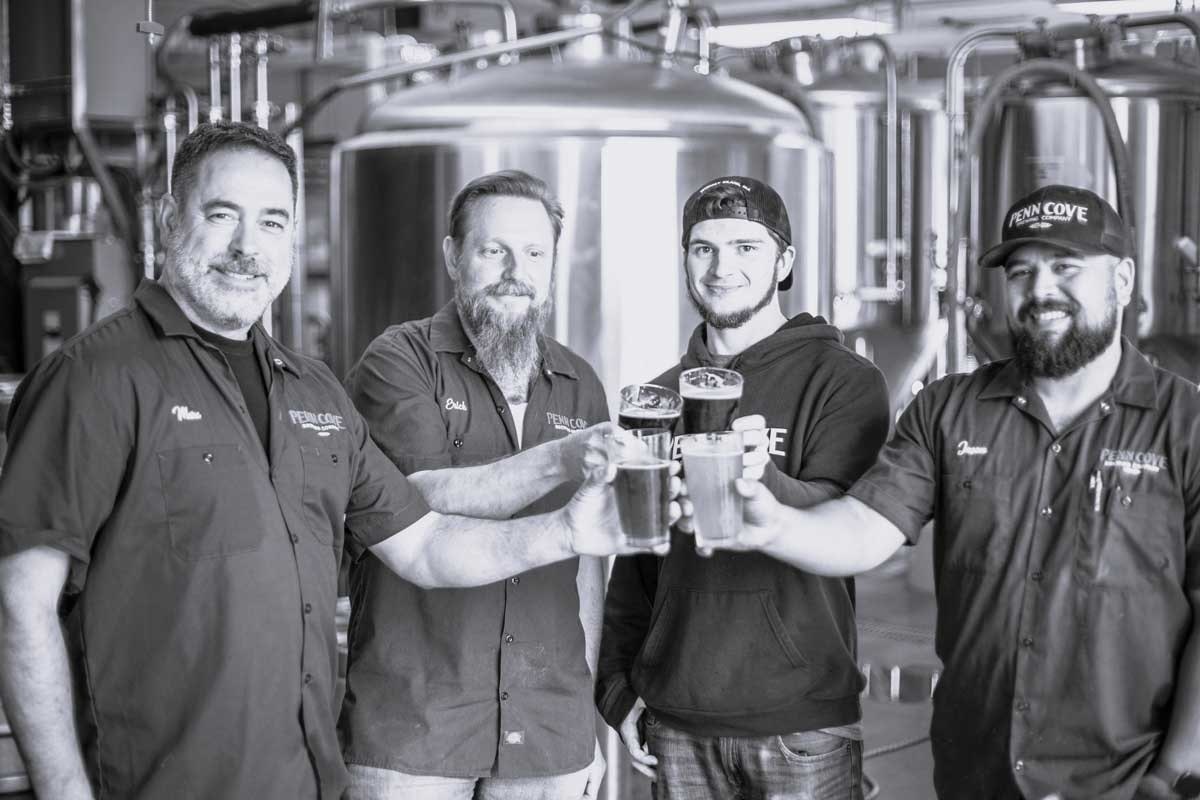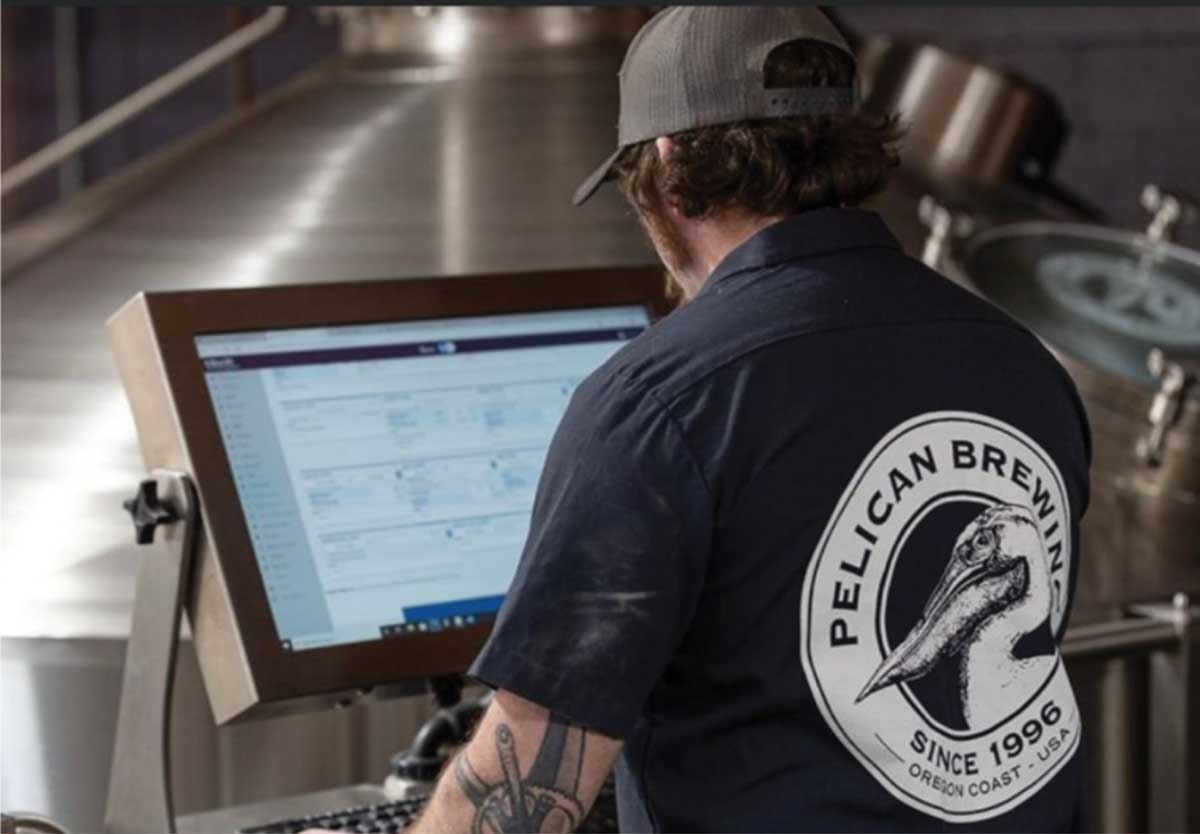SPONSORED CONTENT
For many brewers, switching to brewery software may feel like an unnecessary cost. After all, many breweries can function on a solid combination of spreadsheets and whiteboards. However, what brewers may not realize is that traditional methods using spreadsheets for organization and calculating data could actually cost more than implementing brewery software. When you add together the costs of labor, production, and missed growth opportunities, your potential profits could be suffering.
For its users—more than 450 breweries around the globe—Beer30 has proven its value time and time again.
Here, we’ll take a look at four breweries—Your Mates, Penn Cove, Frog Alley, and Pelican—all of which have benefited from Beer30 by The 5th Ingredient®. These case studies give an in-depth look at how these breweries have saved tens of thousands of dollars in labor, increased brewing capacity, and driven more US$500,000 in additional sales.
Beer30 software consistently proves its value, from additional savings and productivity to major sales growth. Here are four case studies that show how.
How Your Mates Brewery Saved $100,000 (AUD) Per Year in Labor Using Beer30
Starting out, Your Mates was just a couple of guys brewing beer and trying to run a business in Warana, Australia, in the Sunshine Coast. Originally, they “had no idea how to do so,” says Christen McGarry, cofounder and COO/CFO. There were many roadblocks on their journey, and the team had to figure things out as they went along.
Like many small breweries, Your Mates struggled with keeping everything organized. The team was looking for software that could help them organize their inventory, manage their scheduling, and utilize their data to forecast accurate their needs for raw materials.
Using Beer30, Your Mates was able to onboard and get it running in just 24 hours, organizing everything under a single platform. The team was able to consolidate most of their operations to manage them easily, reduce their labor costs, and improve efficiency by a jaw-dropping margin—about $100,000 (AUD) per year.
“With cost savings and time,” McGarry says, “you’d have to employ another person who was experienced in inventory management, scheduling, and materials resource planning—someone who could build a database that could give you the information that Beer30 is giving you. That’s $100,000 salary, I’d say.”
For Your Mates, the Material Resource Planning module was vital. “We just couldn’t live without MRP making sure that we have a forward forecast of the materials that we’re going to need,” McGarry says. “You know, we’ve had tens of thousands of liters of beer held up in tanks before because someone didn’t realize we were almost out of four pack barcodes—because we didn’t have a really strong system to forecast when we would run out of materials, and when we would need materials a whole production facility would just be at a standstill.”
As Your Mates continues to grow, Beer30 has become an important tool for reporting and keeping track of data. Important forecasting features will help Your Mates build for the future as they strive to bring even more great beer to the community.
See the full case study at the5thingredient.com or book a demo today to learn how Beer30 can help save your brewery’s labor costs.
Your Mates cofounders Matt Hepburn and Christian McGarry. Photo: Courtesy of Your Mates Brewing.
How Penn Cove Saved Up To 20 Hours of Labor per Week by Using Beer30
When Penn Cove Brewing in Lake Stevens, Washington, expanded operations, they quickly found a need for Beer30 software by The 5th Ingredient. The team needed brewery software to help them organize inventory, manage scheduling, and consolidate data to highlight areas where they could optimize logistics and reduce labor.
From recipe creation to inventory management, the team consolidated most of their operations to be managed with just a few clicks. Beer30 helped Penn Cove reduce the amount of time spent on task management and data tracking from four to five hours per day to just 4 to 5 hours per week—a saving of up to 20 hours per month.
With increased efficiency and streamlined operations, the leadership team at Penn Cove is excited about the opportunity for expansion.
“Our goal is to get to 3,000 barrels per year or more,” says co-owner Marc Aparicio. “Beer30 will help us with planning and forecasting while also helping us track our existing inventory.”
Penn Cove decided to onboard Beer30 in January 2023 and since then has benefitted in several ways. “After doing the [Beer30] demo and getting to play with the sandbox [demo environment], I was confident it had what we needed,” says head brewer Erick Adams. “I don’t have any complaints, and any little hitches get corrected immediately.”
With features that track multiple warehouses and transfers, purchase orders, lot traceability—and which keep the most accurate Cost of Goods Sold (COGS) in the industry—Beer30 made it easy for the team at Penn Cove to manage everything in one place.
“We’re very meticulous with the software that we use,” Aparicio says. “Beer30 does a big chunk of that for production, inventory, and recipe development.”
While Beer30 has done a lot to help make things streamlined, there have been obstacles. In the summer of 2023, Penn Cove lost its distributor and sales plummeted.
“Our summer consisted of losing our distributor” via buy out, Aparicio says. “We went from selling almost 1,000 barrels per year to nothing, and we had to go out and capture all of our empty kegs and our deposits and everything. Being able to go back into Beer30 to see what we actually did, we could go back to our distributor and say we’re missing 150 kegs, and say, ‘Where are they?’”
Penn Cove had another fire to put out when their preferred maltster suddenly went out of business. When the team realized they would need to recalibrate their recipes, they were grateful to have everything in one place with Beer30. “It was easy to have it all in one software,” Aparicio says.
Overall, Penn Cove has been able to reduce its labor by about 20 hours per week. That would be more than $20,000 per year at an average brewer’s salary (based on the 2022 U.S. average of $21 per hour).
See the full case study at the5thingredient.com or book a no-pressure demo today to see if the software is a good fit for your brewery.
Cheers from the Penn Cove Brewing team. Courtesy of Penn Cove Brewing.
How Frog Alley Used Beer30’s Admin Tools to Scale Production by 1,000 Barrels Per Year
When Laura Clough started brewing at Frog Alley in Schenectady, New York, they were using spreadsheets and printing brew sheets onto paper. If beer or water got on the paper, all the data would melt from the page. So, Laura was beyond relieved when Frog Alley decided to start using brewery software.
In October 2020, when the Frog Alley team switched to Beer30, they knew that they had more fermentation capacity than they were using—yet from an admin perspective, they weren’t ready for greater production. “We were not in a good place, on the administrative side of brewing, to be able to track lots, be able to organize inventory, store recipes, or be able to look at historical data,” Clough says.
Beer30 changed all of this. The software helped the brewery clean things up and boost efficiency. “I feel like Beer30 makes me more efficient, so I don’t have to spend hours in the back to count bags of grain,” Clough says. “I know what we need to order. On the whole, it streamlines and doesn’t require us to have as many side conversations, like, ‘Did you clean that tank?’ or ‘When did you clean that tank?’”
Since starting with Beer30 in 2020, Frog Alley has increased production by using the software’s administrative tools to stay organized and keep track of scaling up. “I feel like we have increased pretty steadily—about 1,000 barrels a year, which feels like a million barrels sometimes,” Clough says.
The company now distributes to about 70 percent of its beer to New York State and continues to increase its capacity every year.
See the full case study at the5thingredient.com or book a demo to learn more.
“Just a few of the many dedicated, strong, smart women who make Frog Alley a better place. Laura [Clough], on the left, holds it down in the brewery every single day, crafting the beer we all love. Charley [Pollard], in the middle, takes care of day-to-day operations and events. Garian, right, a part of our awesome bartending crew. And to the others not pictured, thank you for being a crucial part of our team.” Photo: Courtesy of Frog Alley Brewing.
How Pelican Used Beer30 to Optimize Production and Drive a $550,000 Annual Sales Increase
Pelican Brewing in Pacific City, Oregon, was going through a period of rapid expansion. To support this growth, they decided to implement the Beer30 Production Suite, alongside their existing ERP system, to take a deeper dive into their brewing process.
Before Beer30, the Pelican team knew they faced challenges with production efficiencies and had difficulties tracking performance trends with different beers. Yet perhaps the biggest issues they faces were those they didn’t even know existed due to poor visibility.
Beer30 was able to bring all of Pelican’s production logs into a single, accurate source. Batch History reporting pulled the entire production process into a comprehensive report for each batch of beer. That gave Pelican’s production team the ability to understand how upstream changes truly impacted the yield and quality of each finished batch—a process that would normally live in anywhere from seven to 15 spreadsheets breweries using different ERP systems without Beer30.
“We still handle inventory, invoicing, and accounting function through an MRP/ERP,” says Martin G. Bills, director of brewing operations. “We completely decouple batches from the MRP, track essential data through Beer30, then send finished goods back to the MRP. It’s easy to do, with far fewer keystrokes.”
Variability in the production process is one of the largest sources of inefficiency for any brewery. Whether it’s changes in raw materials over time, differences in yeast generations, inconsistency in performance between team members, or mechanical issues, there are countless sources of variability from batch to batch.
Using Beer30, Pelican was able to easily compare process and quality data from batch to batch, identify when something was out of spec, and use Batch History reporting to quickly identify the root cause. Additionally, Beer30 includes customizable tolerance levels for recipe parameters throughout the brewing process, with dynamic color coding and alerts when something is out of spec. With these real-time text and email feedback alerts, the Pelican team was able to respond to issues quickly and take corrective actions early on, before the issue worsened or affected future batches. When there are potential errors on brew day or during fermentation, each day matters to avoid production delays.
By implementing Beer30 alongside their existing ERP system, Pelican gained the visibility to identify several sources of process variability and areas for improvement in the brewery production process. Furthermore, they used Beer30 to track their performance-improvement projects and dial in efficiencies overall.
As a result of these efforts tracked in Beer30, Pelican Brewing was able to:
- increase their average brewhouse volume output per batch by 15 percent.
- increase average fermentor fill volume from 185 to 205 barrels.
- reduce fermentation time before cold-crashing from an average of 14 to eight days for ales, and from 30 to 15 days for lagers.
- significantly reduce tank turn time and increase total cellar capacity.
- increase average overall yield from brew to package by 12 percent.
- decrease COGS by $15 to $20 per barrel due to increased beer yield.
- grow sales by $550,000 through added beer production over the span of one year.
“Overall,” says brewery manager Jason Schlebach, “Beer30 has been a great tool to bring on and has brought a lot of light to daily processes that either lived in notebooks and binders, or were muddled in an ERP database that wasn’t really designed for qualitative data. The system is intuitive, user-friendly, and easy to train staff to use.”
See the full case study at the5thingredient.com or book a demo today to learn how Beer30 can help your brewery increase annual sales.
Pelican Brewing using Beer30. Courtesy of Pelican Brewing.
Conclusion
Software can be an important tool for any brewery. If you’re considering brewery software at yours, it can feel like an unnecessary expense—but be sure to consider the money and time you’re losing by not utilizing brewing software. Software such as Beer30 is an investment, but with powerful tools for organizing and streamlining operations, it’s one that could greatly benefit your bottom line.
If you’re looking for a solution to save time, brew more efficiently, and help scale operations at your brewery, Beer30 might be the answer. Schedule a demo to see if Beer30 brewery software is a good fit for you.
SPONSORED CONTENT





